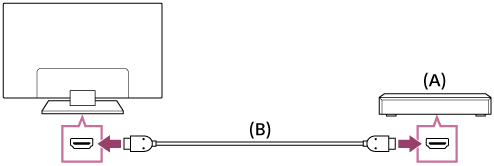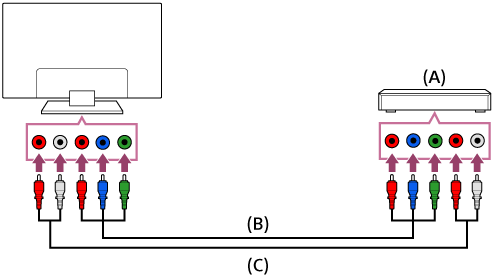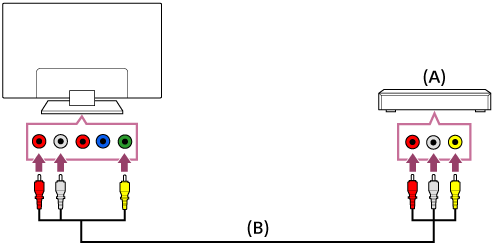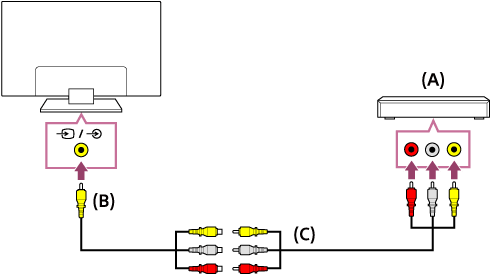Connecting a Blu-ray or DVD player
Connect a Blu-ray/DVD player to the TV.
HDMI connection
For optimum picture quality, we recommend connecting your player to the TV using an HDMI cable. If your Blu-ray/DVD player has an HDMI jack (socket), connect it using an HDMI cable.

- Blu-ray/DVD player
- HDMI cable (not supplied)*
* Be sure to use an authorised HIGH SPEED HDMI cable bearing the HDMI logo.
Component video connection
Availability depends on your model/region/country.
If your Blu-ray/DVD player has component video jacks (sockets), connect them to the TV using a component video cable and an audio cable.

- Blu-ray/DVD player
- Component video cable (not supplied)
- Audio cable (not supplied)
SCART connection
Availability depends on your model/region/country.
If your Blu-ray/DVD player has a SCART jack (socket), connect it using a SCART cable.

- Blu-ray/DVD player
- SCART cable (not supplied)
Note
- SCART connection may provide the same picture quality as a composite connection, depending on the connected Blu-ray/DVD player.
Composite connection
Availability depends on your model/region/country.
If your Blu-ray/DVD player has composite jacks (sockets), connect them using a composite video/audio cable.

- Blu-ray/DVD player
- Composite video/audio cable (not supplied)
If using an Analogue Extension cable
Availability depends on your model/region/country.

- Blu-ray/DVD player
- Analogue Extension cable (supplied)*
- RCA Cable (not supplied)
* Whether the Analogue Extension cable is supplied depends on your model/region/country.